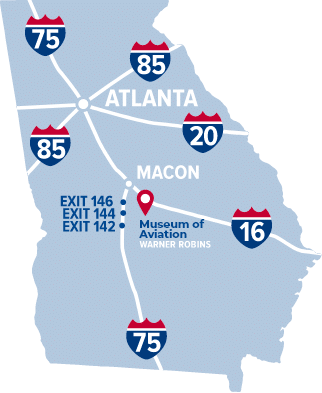The PT-17 was typical of the biplane primary trainers using during the late 1930s and WWII. Whereas it was powered by a Continental engine, the same airplane with a Lycoming engine was designated the PT-13, and with a Jacobs engine, the PT-18. A later version which featured a cockpit canopy was designed the PT-27.
Of 10,346 Kaydets ordered for the US and its Allies, 4,360 of these went to the Army Air Force (AAF). Following WWII, the Kaydet was phased out in favor of more modern trainers.
During WWII, Robins AFB served as a repair and supply depot for PT-17s in the Southeast. The Kaydet on display was delivered to the AAF in February 1943 and was assigned to the 2164th Base Unit, Tuskegee Army Air Field, Alabama. It was later dropped from the AAF inventory in August 1945 at Eagle Field, Texas as surplus. It passed into civilian hands and was used as a crop duster before being acquired by the Museum as one of their first aircraft in 1982.










